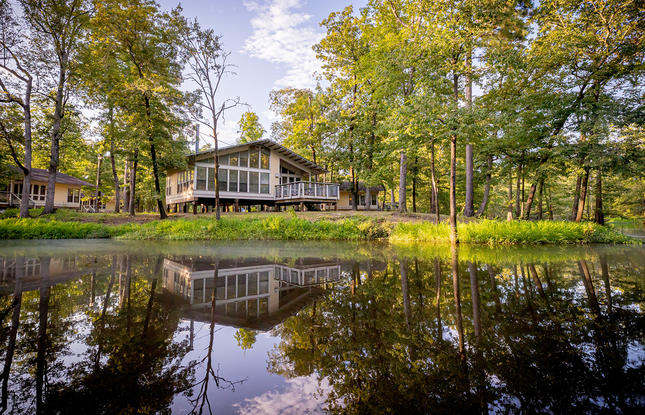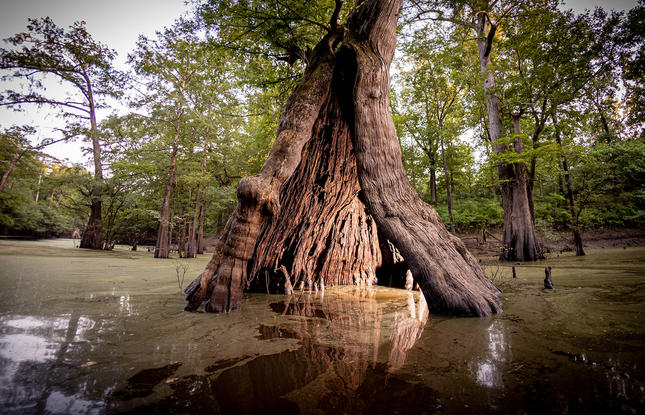Chemin-A-Haut State Park
Discover incredible recreation opportunities at this northern State Park.
Chemin-A-Haut is named for a French phrase meaning “high road,” referring to its scenic location on a high bluff in north Louisiana. Native Americans once used the site on seasonal migrations through these north Louisiana woodlands.
Families flock to Chemin-A-Haut for its many activities geared toward kids. The park’s swimming pool, open seasonally, is a great way for visitors of all ages to cool off during the day. For younger guests, a wading pool is also on site. Two playgrounds can be found in the day-use area of the park.
There are 35 picnic sites, equipped with grills and tables, inviting families to dine al fresco. Traversing through these picnic sites and nearby shelters is a hard-surfaced trail that rises to hills overlooking Bayou Bartholomew. Other trails include those designated for horseback riders, and two short paths that offer visitors a short round-trip trek to make room for dessert.
The main attraction here is the bayou. Massive cypress trees crowd the waters flowing through them, making Bayou Bartholomew a photographer’s paradise. The massive "Castle Tree" — an estimated thousand-year-old cypress tree — is a natural wonder. The base of the tree measures 20 feet in diameter, and even has a cave-like opening that offers paddlers a peek inside. Anglers will find freshwater fish such as bream, redear sunfish and bluegill along the banks.
After a day of fishing, photographing, hiking and biking, visitors are welcome to sleep in one of 15 cabins ranging from small-and-cozy to a single spacious group camp that accommodates up to 38 people. Primitive campsites are also available.
Learn more about Bastrop and Morehouse Parish at the Snyder Museum. Over in Monroe, visit the Black Bayou Lake National Wildlife Refuge for more outdoor fun — and to see towering baldcypress and water tupelo trees. Or, check out the Poverty Point World Heritage Site in Delhi, a collection of prehistoric Native American earthworks dating back over 3,000 years.
Entrance fee: $3 per person; free for seniors age 62 and older, and children age 3 and younger.




